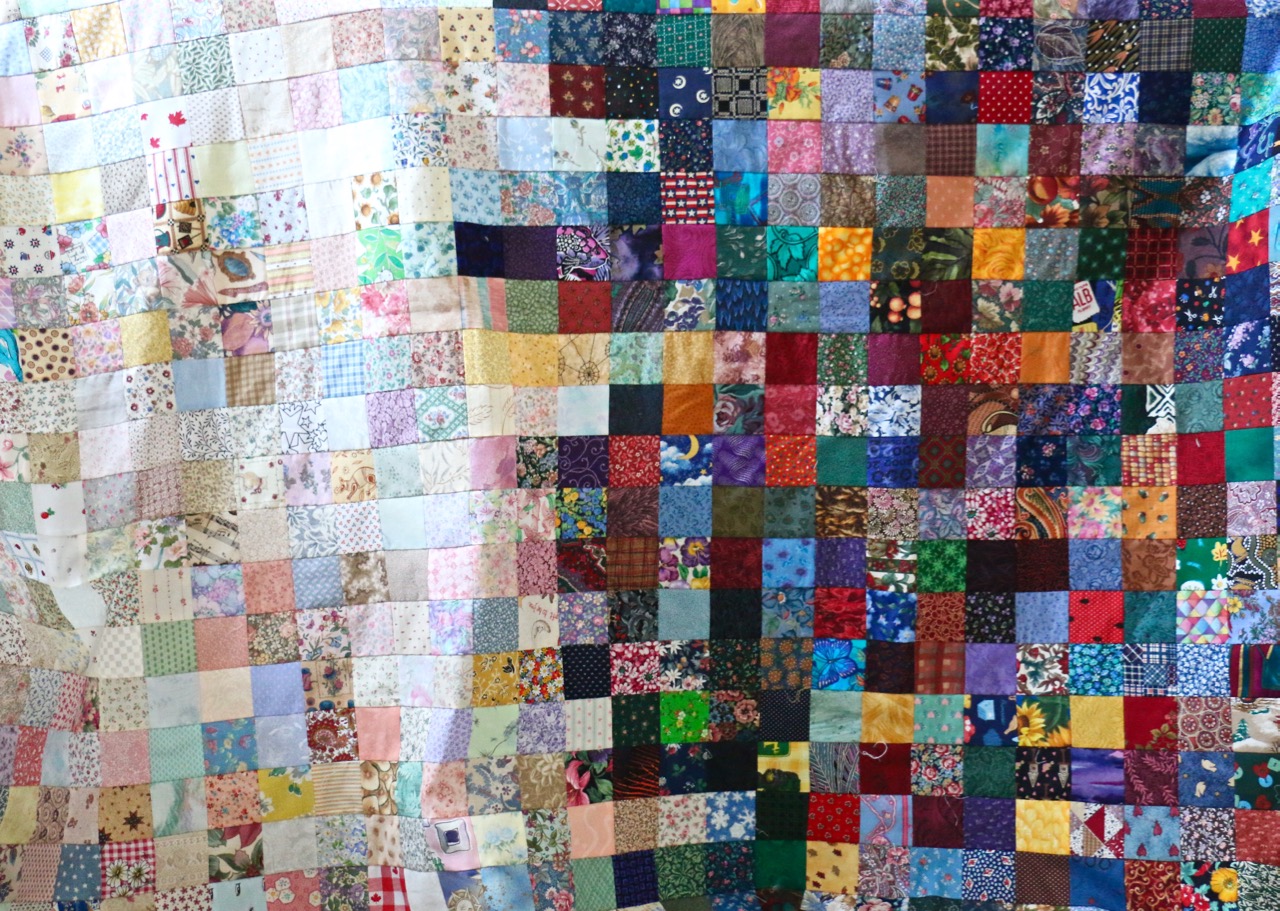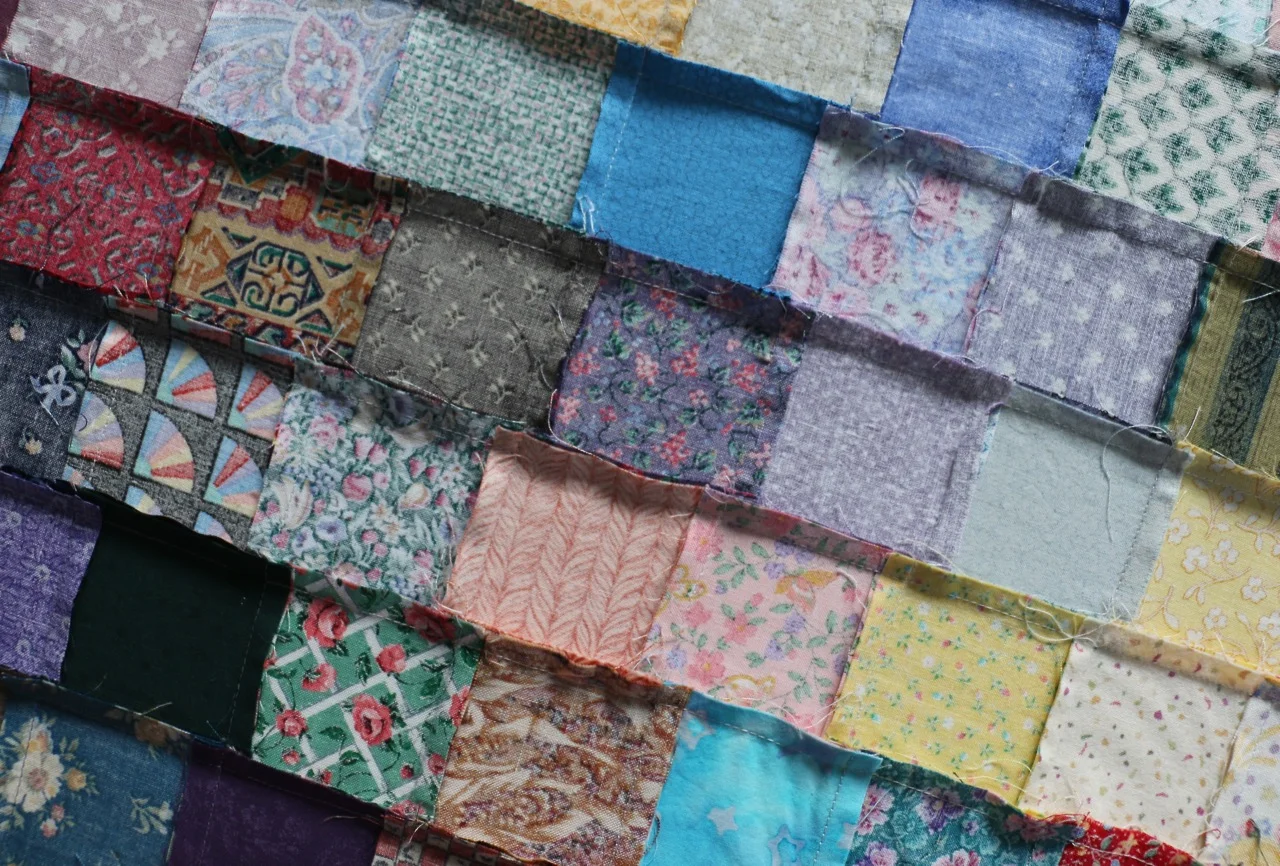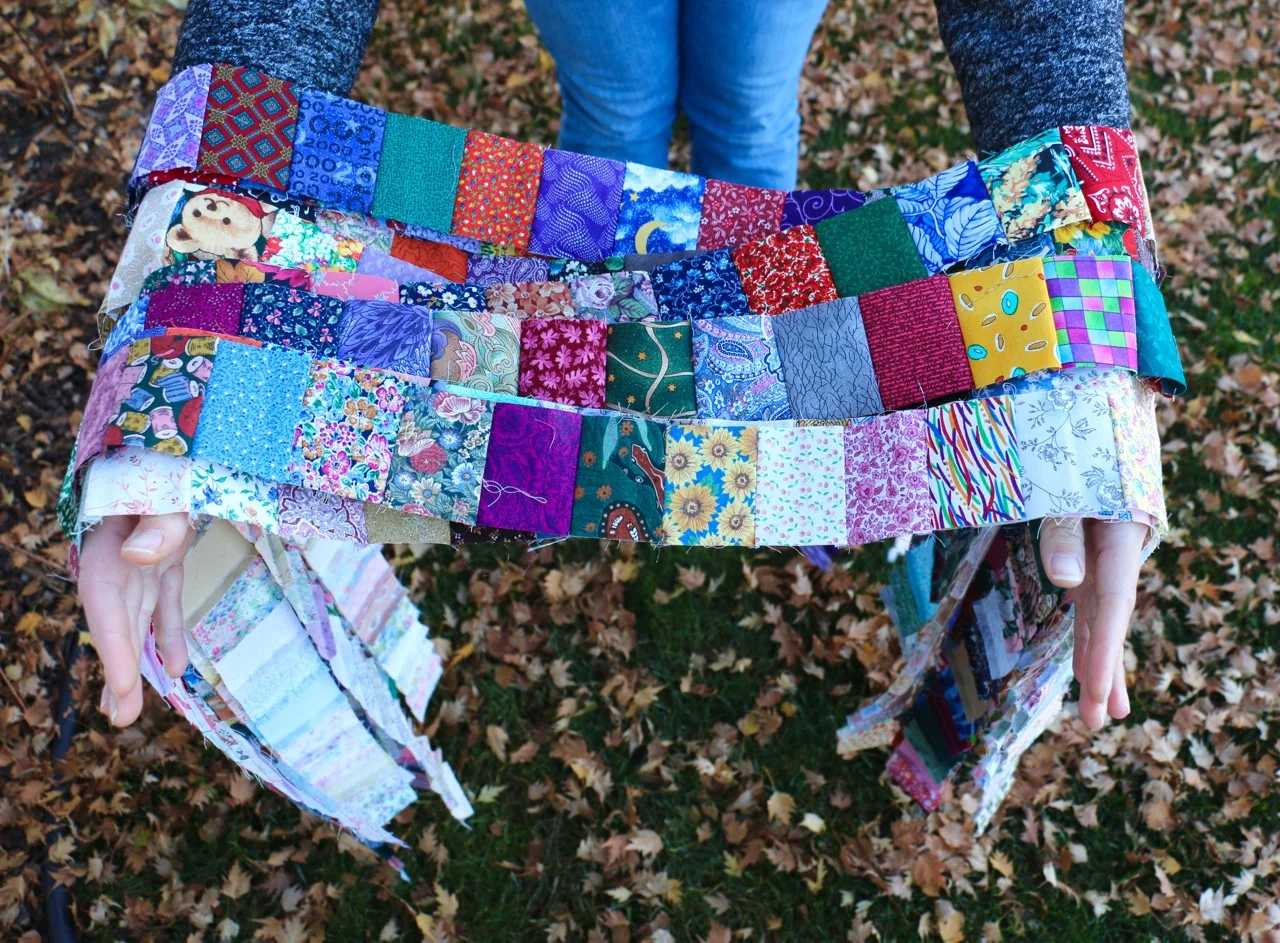Okay, so it isn't done yet. Only the top is done. But can we take a moment to celebrate sewing together 2000 little squares of fabric? I realize only quilters would celebrate that, but still. It comes in at 80'' by 100''. I only would have started it 17 years ago, when I participated in a swap prior to the Y2K New Year.
Can we also take a moment to celebrate 1990s fabric?
The prints were so little, the colours mostly drab, and calico still reigned supreme. In looking at these fabrics again you can see why Amy Butler and Heather Ross were so revolutionary when they burst on the scene more than a decade ago! Changing the scale of the prints was huge, not just a big deal. A large scale print in the late 1990s would have meant a motif an inch or maybe 2 inches big. Then Amy's work came in at triple and quadruple that. And now, even to someone who considers themself a traditional quilter, these old prints are probably tiny. The market just moved to bigger designs, period.
Of course, there were and are always exceptions to the trends. What were then called Japanese inspired prints always seemed to have larger motifs with negative space in between. Saturated colours in fabric existed then, although they were most likely seen in novelty (kids) or geometrics prints. We still see small florals now. Text prints existed then as they do now, although not with the selection we have. Yellow is still a tough colour to find because, inexplicably, people find it hard to use.
The biggest difference in the 17-20 years since the fabrics in this quilt were made is in the general colour story. There is a lot of forest green, brown reds, and dull blues here. In a quilt store in the 1990s the fabrics with pure hues would have stuck out like a sore thumb. Great if you are drawn to them, not so great for store owners who may have found them a hard sell. Now, in some quilt stores you would be hard pressed to find a forest green, brown red, or dull blue. The fabrics for landscape quilts, yes. Or Civil War reproductions, sure. If the store carries that broader variety of prints. I'm generalizing here, of course, because you still see those colours, but you probably get what I'm saying.
I think it would be fascinating to see a version of a Y2K quilt made with today's fabrics. Not even an intentional effort to only put modern fabric in. No, just someone cutting into their stash to see the difference. That someone, however, will not be me. Once is enough. Did I mention that this quilt top has 2000 squares?









